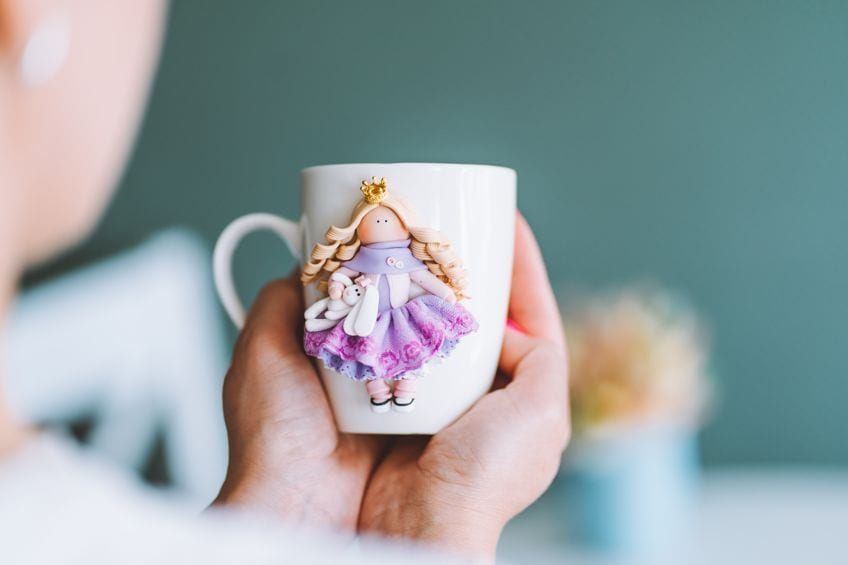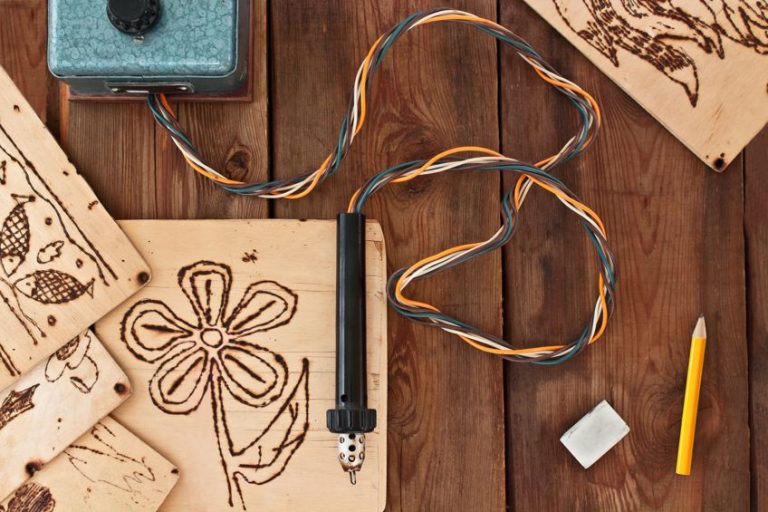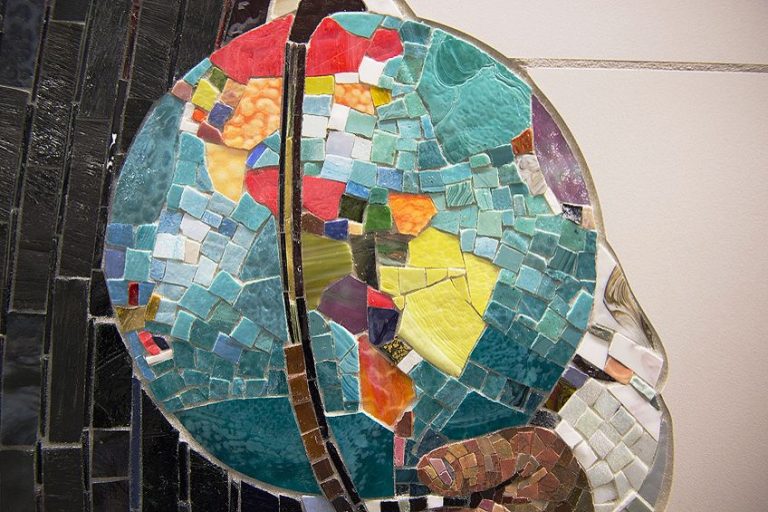Polymer Clay Ideas – Fun Things to Make with Polymer Clay
From amateurs with a burgeoning passion for crafts to erudite artisans with decades of experience, polymer clay is one of the most entertaining and gratifying mediums to work with. While being easy enough for children to use, polymer clay’s durability and versatility still make it incredibly popular among professional artists. If you want to know more about polymer clay and the many fun ways it can be used, you have come to the right place!
What Is Polymer Clay?
Polymer clay is a synthetic modeling clay that can be used by arts and crafters of all skill levels for a number of creative projects. Polymer clay does not actually contain any natural clay minerals. Instead, it is primarily composed of chlorinated hydrocarbon polymers (the same used for PVC pipes), coloring agents, fillers, and resin. However, just like with natural clay mediums, polymer clay must be mixed with water to become moldable. Also, much like many natural clay types, polymer clay can be cured at high heat to become solid structures.
On account of its malleability, versatility, durability when hardened, and ease of use, polymer clay is an incredibly popular medium for arts and crafts items such as sculptures, bowls, jewelry, pendants, and beads. Your options on how to work with polymer clay are limited only by your imagination. And even then, you have articles like this to inspire even more ideas. It can be molded, engraved, painted, and even paired with other crafting materials. Better yet, unlike natural clays, polymer clay is not very sticky and thus cleaner and easier to work with.
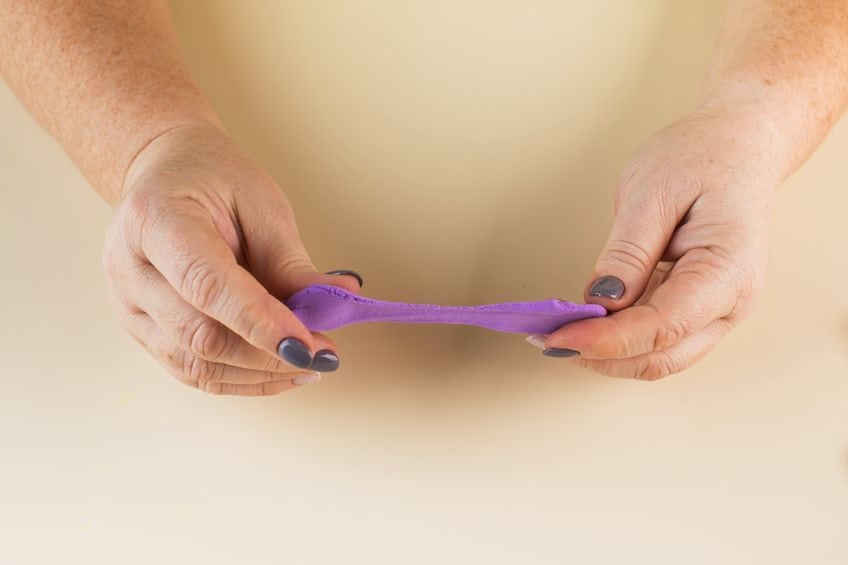
Polymer clay is used and adored by crafters of all levels and even sees extensive use in the production of commercial goods. There are even many examples of polymer clay pieces featured in esteemed art museums around the world.
Polymer clay’s history dates back to nearly a century ago in the 1930s when a German doll maker named Fifi Rehbinder invented the material in response to dwindling supplies of natural clay during the Second World War. Although she guarded the secrets of her remarkable formula for decades, she eventually sold the patent to Staedtler in 1964 who used it to create the FIMO polymer clay that many artists today remain steadily fond of.
It would take a further six years before FIMO hit the shores of America but the country had its own versions by then. As it were, an American company had stumbled onto their version of polymer clay completely by accident. Funnily enough, this version would be the first iteration of the Sculpey polymer clay brand we know and love today. Polymer clay comes available in a wide variety of colors and consistencies. You can also buy different kinds of polymer clay mixes to achieve different kinds of finishes. If you want to learn about some creative ways in which you can make use of polymer in your next art project, stick around.
We have some fantastic polymer clay ideas.
The Pros and Cons of Polymer Clay
There are a great many reasons why artists love working with polymer clay beyond its remarkable versatility. There are, however, a few caveats and limitations to polymer clay as well. That being said, the benefits far outweigh the drawbacks as you are sure to find out for yourself as we list out some of the primary pros and cons of this medium, starting first with the good news.
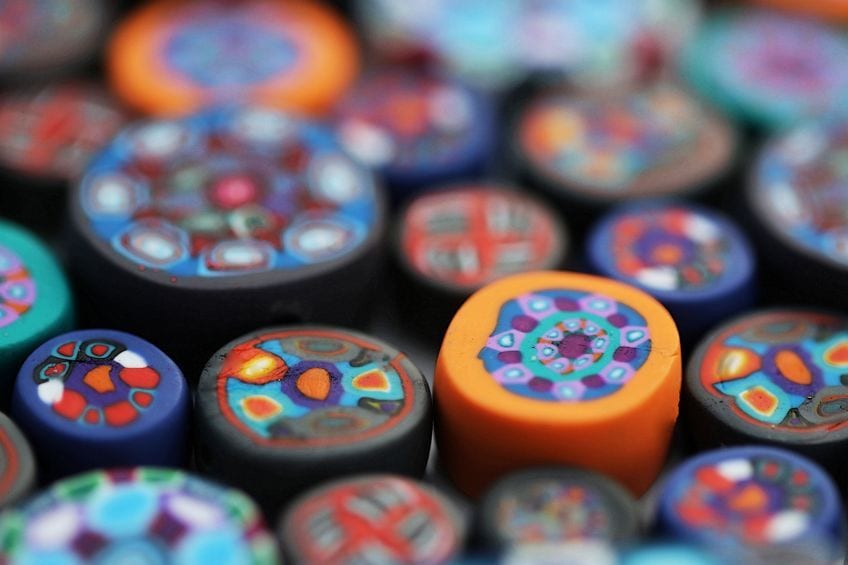
The Pros
Here is a list of some of the most notable benefits afforded to users when working on polymer clay projects.
Polymer Clay Is Non-Toxic
Even though polymer clay is an artificially produced clay containing plasticizers, most reputable brands of polymer clay (such as FIMO and Sculpey) are completely non-toxic. This is because the plasticizers that are known to pose health risks are not used to produce polymer clay. The worst health issue that can be caused by the non-toxic plasticizers present in polymer clay products is an upset stomach. This makes polymer clay the perfect medium for your toddlers to work with.
Even if you have dogs or cats, you need not worry because polymer clay is pet-friendly as well.
Polymer Clay Can Be Baked in Your Kitchen Oven
Yes, you read that correctly. You can actually use the oven in your home kitchen as a kiln to bake your DIY polymer clay creations – talk about homemade! And you do not even have to worry about any toxic gases being released during this baking process and making your oven unsafe for cooking either. This is because even the fumes produced by polymer clay are non-toxic. That being said, though, you should still exercise precautionary methods such as not baking your clay on surfaces that you intend to cook food on and giving your oven a nice clean before it is used again.
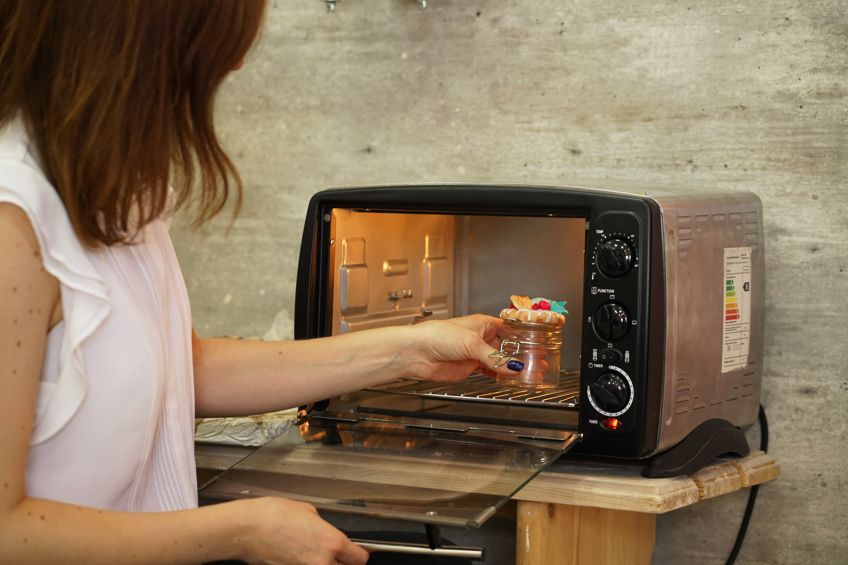
Polymer Clay Has One of the Fastest Drying Times
Are you a children’s art teacher looking for a quick and easy class project? Are you a working parent on the lookout for a time-saving creative activity to do with your kids before they go to bed? Whatever the case may be, polymer clay is a great choice of medium given its fast turnaround time. Unlike air-dry clay, which can take anywhere between one to three days to cure, polymer clay projects can dry completely within as little as 15 to 30 minutes!
With curing times this fast, you could complete a project made using polymer clay in just a few hours.
Polymer Clay Does Not Dry Out
What many avid fans of polymer clay are very quick to point out about the medium is the fact that stays malleable and moldable up until it is ready to go into the oven. This is on account of the material’s excellent water-retention capabilities. This means that you can wait as long as it takes for your modeling clay ideas to manifest perfectly before drying them into finished products.
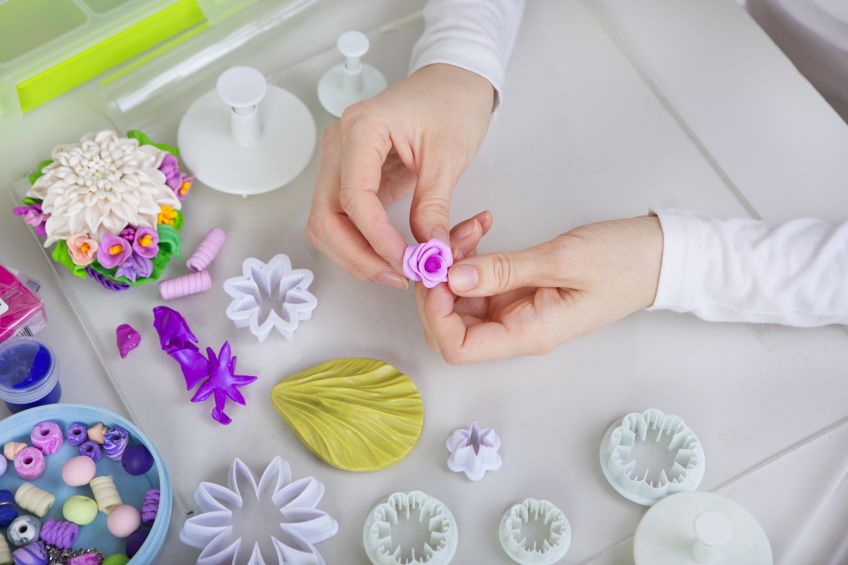
Unlike some other popular clay mediums, polymer clay allows users to take their time to better perfect their craftsmanship before completion. If you have little children with short attention spans, this also means that you can work on polymer clay projects with them over the course of an entire day or week if necessary. When working with polymer clay, you can leave and come back to your projects freely.
The only precaution you have to take into account here is the fact that polymer clay can begin to harden when exposed to direct sunlight or when it reaches temperatures above 90˚F. To prevent this from happening, though, you just need to find a cool and dry space to store your clay. In these optimal storing conditions, polymer clay can remain soft for several years.
Polymer Clay Retains Its Size and Shape
When using natural clays such as air-dry clay, you are advised to account for the shrinkage that occurs during the curing process. Not factoring this into your clay-making before your project goes into the oven can often lead to disastrous events such as cracking, paint chipping, and loss of detail.
When using polymer clay, on the other hand, you do not need to worry about shrinkage at all, nor expansion for that matter because polymer clay does not do either during the curing process. The dimensions of your project as it enters the oven will be the exact same as when they are removed.
More so, polymer clay is great at retaining those finer details that you may want to etch into the surface. The designs and textures, no matter how fine, will remain just as clearly expressed once dried. This makes polymer clay viable as a medium to combine with other mediums such as metal and wood. Its ability to remain true to scale means it can be crafted in specific dimensions to fit into multimedia projects.
Polymer Clay Is Tough
In terms of its moldability when wet and its durability when hardened, polymer clay has most other forms of clay beat by a longshot. A big part of what makes polymer clay so perfect for children of all ages is the fact that it is so soft, requiring less force than other clays to mold into the shapes you want. But once it has hardened, it becomes super strong and resilient to the elements. Projects that you have crafted out of polymer clay will likely stand the test of time if baked properly.
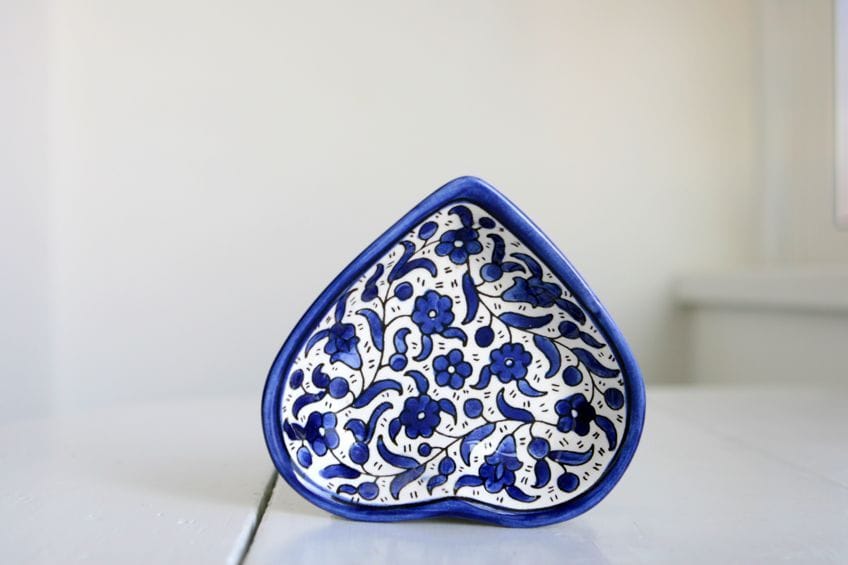
Also, on account of polymer clay being made up of plastics, it is totally waterproof! This means that you can use this clay to construct items that are meant to spend a lot of time outdoors. Stuff like vases, pottery, waterfall sculptures, and pond decorations are just a few examples of things to make with polymer clay.
Polymer Clay Is Not Messy
Natural clays can be just as fun to work with but they leave so much mess to clean up afterward, especially when children come into the equation. Unlike natural clays, polymer clay struggles to adhere to skin, which is less sticky and easier to clean off.
While you should expect some of the clay’s color to dye your fingers a little bit, this can be cleaned up with soap and warm water.
Polymer Clay Is Still Fun in Small Amounts
In polymer clay making, a little can go a very long way. This is especially true when polymer clay is used to create things like jewelry, small sculptures, pendants, charms, and beads. If you are just starting out with polymer clay, you are encouraged to buy small quantities instead of committing to a whole tub. What you can also do is purchase a whole bunch of smaller packs of polymer clay in a variety of different colors to play around with. You can even buy tester packets of polymer clay to experiment with different versions and colors until you find the ones that work for you.
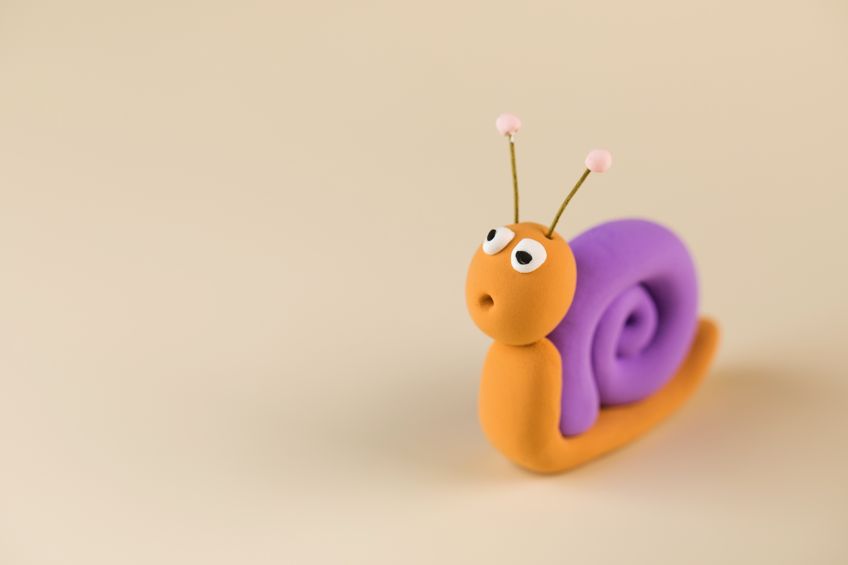
Polymer Clay Does Not Lose Color
When working with clays like air-dry clay and ball clay, you have to worry about discoloration during the baking process but the same cannot be said for most types of polymer clay. As long as you follow the proper baking instructions, polymer clay should not lose any of its color once it has completely dried. If you are looking for bright, vibrant colors in your next clay project, you can rarely go wrong with polymer clay.
One thing to note, however, is that lighter shades of polymer clay and its translucent varieties stand the chance to discolor slightly when baked.
Cons
There are, unfortunately, a few disadvantages that come with polymer clay. The good news is they are few in number. Here are some of the more common issues with polymer clay.
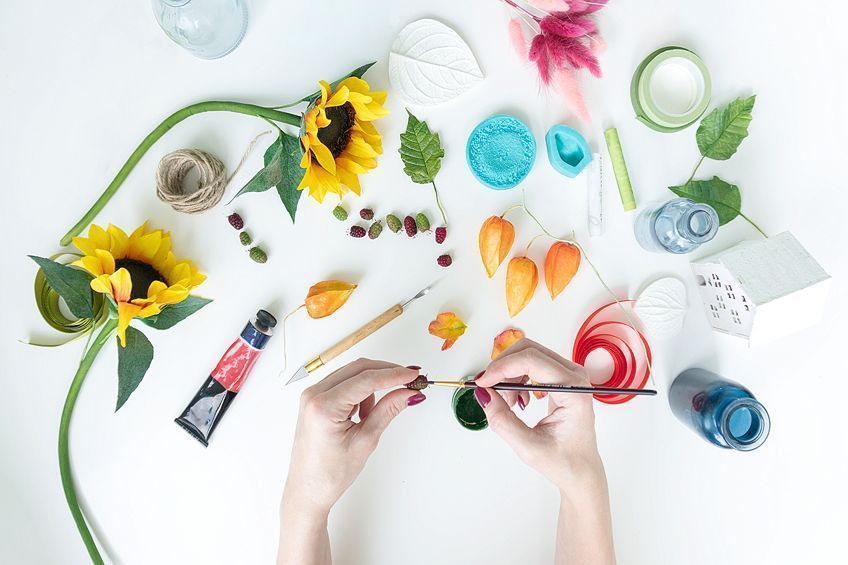
Polymer Clay Is Not the Best for Sculpting
It is the opinion of many sculptors that polymer clay is one of the toughest clay mediums to hand-sculpt. According to some professionals, this is on account of how difficult it can be to mold the clay into detailed features.
This is especially true in the case of sculptors who spend a lot of time working with facial features.
The Baking Process Can Be Tricky
This is the biggest and most commonly documented issue that people tend to experience when working with polymer clay. There are specific baking instructions to follow depending on the shape and volume of any particular polymer clay piece. Failing to properly bake your polymer clay pieces can lead to a few unwanted problems.
First of all, by not getting the temperature high enough or not leaving the clay in for long enough, you might end up with a soft, underbaked project. Secondly, by doing the opposite you could accidentally overbake your clay piece. This can cause discoloration and even burn the surface of your clay, ruining its shape and detail.
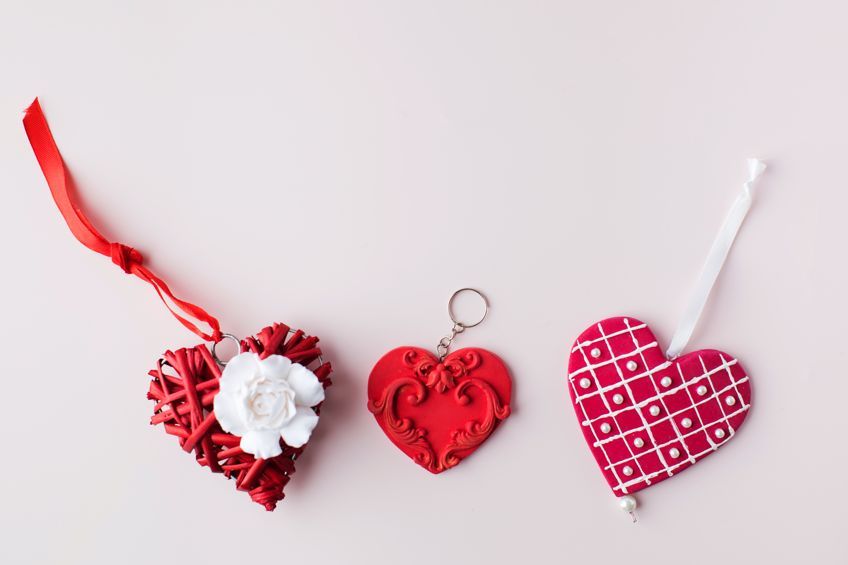
Underbaking your clay can also lead to it developing cracks. These cracks will allow water to enter and could expand further over time, leaving you with a very brittle piece of art. Fortunately enough, cracks can be fixed rather easily using fast-dry putty or super glue to fill in the seams. Afterward, you can give your clay piece a good sanding with some low-grit sandpaper.
[su_shadow style=”simple”][su_panel]PROS
- Non-toxic
- Can be baked in kitchen ovens
- Fast dry times
- Does not dry out in storage
- Retains its form after baking
- Durable
- Less messy than other clays
- Fun in small amounts
- Does no lose color
CONS
- Not good for sculpting
- Complicated baking process
Polymer Clay Ideas
There is an infinite number of things you could do and create with polymer clay. You can buy polymer clay in many different funky colors and textures and even combine different types together to create stunning and unique works of art. You do not just have to work with your hands either. You can use all sorts of tools, found in the kitchen and in craft stores, to stylize your projects even further.
Polymer clay is also super affordable, meaning it offers you heaps of entertainment at very little cost.
If you are just starting out with polymer clay, you can develop a knack for the craft by creating smaller projects in the beginning, like earrings and tiny figurines. Once you become a little more adept, you can start creating bigger, functional objects such as coasters and mugs. If you want some awesome polymer modeling clay ideas, look no further. Here we have compiled a whole bunch of polymer clay ideas, ranging from easy to hard.
DIY Polymer Clay Tools
Before you get started with any polymer clay projects, you will want to gather some crafting tools to assist you in creating your masterpiece. Apart from some polymer clay, which you can buy from any crafting store, try to keep these items on hand if you can as well:
- Cookie/playdough cutters
- A rolling pin
- Sandpaper
- Carving knife
- Shape molds
- Toothpicks, pins, toothbrushes, combs (for adding texture)
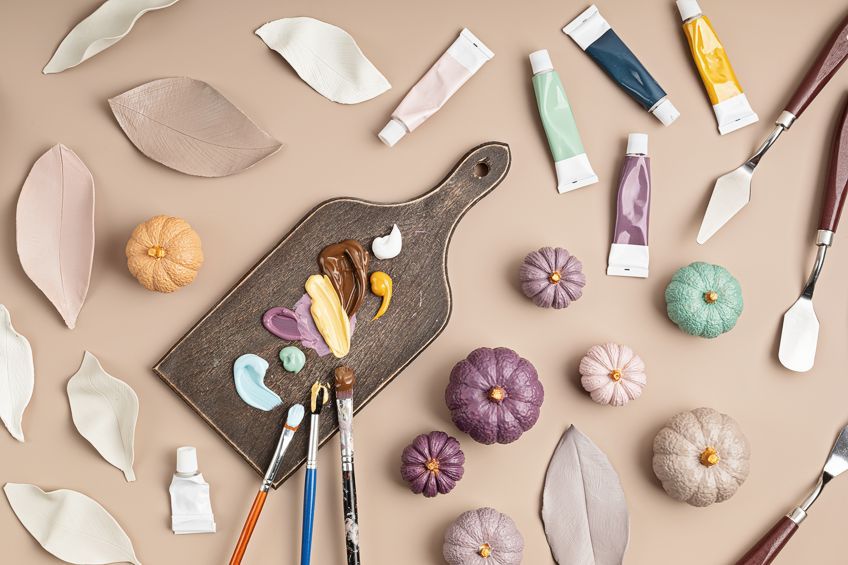
It is important to note that any utensils and any other household tools used for working with polymer clay should not be used for food ever again. This is good to know given that many tools commonly found in the kitchen can be used with polymer clay. If you choose to use any household items to work with polymer clay, just be sure to keep them aside and use them exclusively for crafting.
Once you have your clay and have rounded up all your tools, it is time for you to prepare your workspace. Be sure to cover your workspace with materials like newspapers and plastic sheets to minimize the effort you will later have to put into cleaning up. You are especially encouraged to do this if you plan on painting your polymer clay.
Easy and Cute Polymer Clay Ideas
There are many fun and easy Sculpey clay ideas that you can experiment with if you are trying to wet your beak as a beginner. A cute clay art project to start your journey off with would be jewelry pieces like earrings, beads, and key chains.
So, if you are a beginner crafter just learning the ropes, here are some easy polymer clay ideas for you.
Some Cute Polymer Clay Ideas for Jewelry Pieces
Even if jewelry is not your thing, they nevertheless make for some of the easiest projects to start off with. The shapes involved in clay jewelry-making do not necessarily require the use of any specialized tools.
Beads, for example, can be made by rolling tiny pieces of clay into perfect little balls and sticking a needle through them to form the hole for the string to thread through. You can paint these beads either before or after they have been dried depending on what sort of paint you use. We recommend that you paint your Sculpey clay ideas using acrylic as it can be applied both before and after painting and can offer your projects a bit more durability. You can also make different color beads by molding them with different colors of polymer clay. With enough beads, you can then use your pieces of cute clay art to create necklaces, bracelets, and earrings.
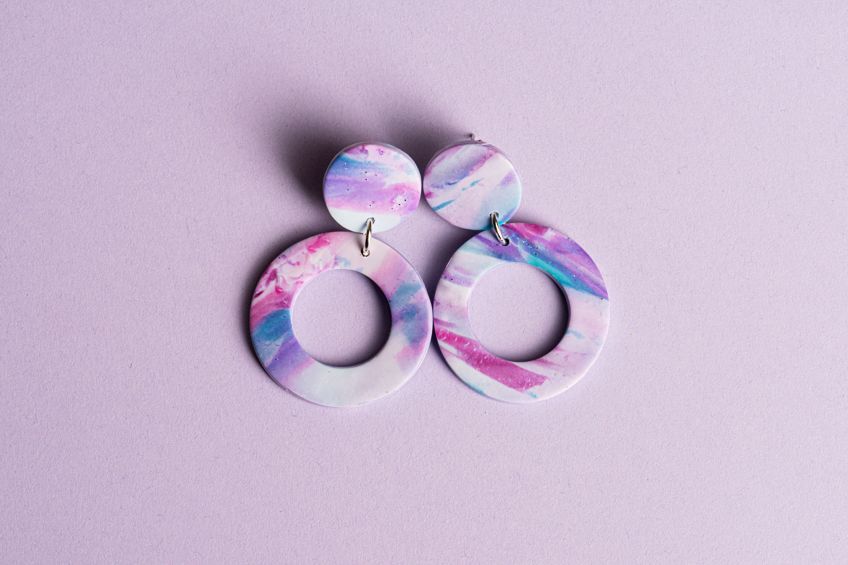
You can also make all sorts of other small shapes out of polymer clay to turn into pieces of jewelry. You can make cute little hearts, teardrops, moons, and stars to name only a few of the easy shapes you can mold or cut by hand without any special tools. That being said, you can invest in molds and shape cutters if you take a liking to jewelry making and want to shape your clay faster. You can also buy clay stamps to easily add different sorts of textures to the surfaces of your clay jewelry.
Garden Signs
If you know someone who loves tending to their garden, why not surprise them with a little gift that they can decorate and organize their yard with? You can use polymer clay to make signs that can be labeled later to help organize the plants in a garden, whether it be yours or someone else’s. This decorative piece of art can liven up a garden space while also performing a useful function.
Just be sure to add a coat of something that keeps the clay waterproof.
Cute Polymer Clay Ideas for Bookmarks
Are you trying to think of a nice gift for the bibliophile in your life? Are you, yourself, an avid reader? If so, here is another fantastic idea for things to make with polymer clay. Handcrafting a bookmark is fairly easy when working with polymer clay as your primary medium. After shaping out a thin, rectangular piece of clay using a rolling pin and a knife, you can add any colors, text, or textures to the slab before throwing it into the oven. What you will be left with is a completely unique and functional bookmark.
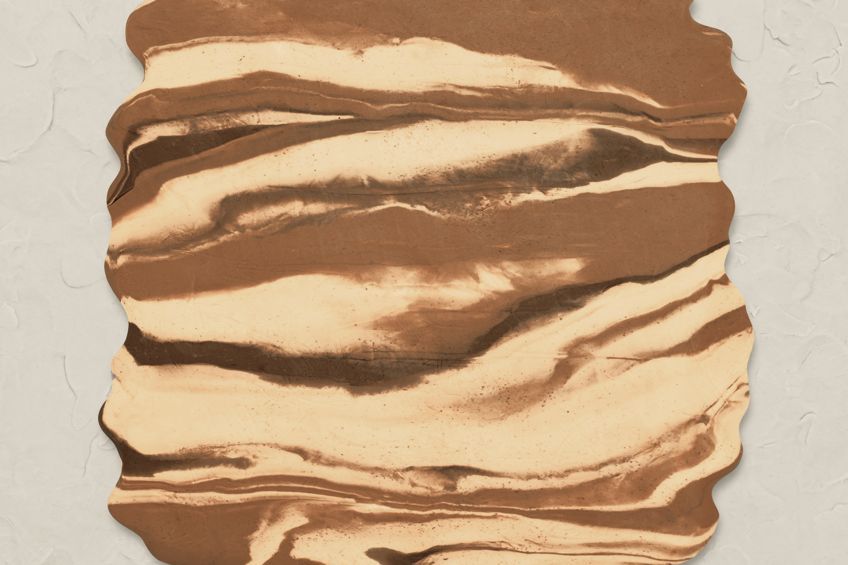
Polymer Clay Charms
Among the many easy polymer clay ideas to choose from, making charms is among the most fun and rewarding. You can use small pieces of polymer clay to make beautiful charms and pendants, which can be used as decorative pieces for keychains, cellphone cases, necklaces, and wristbands.
You can even take it a step further and make tiny models of real-life objects using simple shapes. For instance, you could make tiny mushrooms, carrots, and strawberries that you can paint to match the natural colors of these objects.
Better yet, you can buy tiny magnets, which you can stick to the backs of your polymer clay charms to make some adorable fridge magnets. Just make sure to use powerful superglue to connect the magnets and only do so once your projects have been fully baked. Polymer clay fridge magnets are the perfect projects for little kids and families as they can be displayed in the kitchen for all to admire. Furthermore, fridge magnets are super useful for sticking other works of art on the fridge.
Incense Trays
Burning incense is a great way to calm the senses and stimulate artistic creativity. Why not use some polymer clay to build your own incense stand or tray? This is another one of those easy polymer clay ideas with a useful function. The next time you feel the need to stretch that artist’s muscle in your brain, you can burn some incense on the piece of art you made to get yourself in the mood.

Decorations for Christmas
With the Festive Season soon upon us, perhaps a Christmas-themed clay project is what you are looking for. Polymer clay makes for great ornaments that can easily be painted in colors that fit the jolly theme of Christmas. For starters, you can make some fun tree decorations such as eggs, striped candy sticks, and snowmen. The list goes on and on. This sort of project is also perfect for families who celebrate Christmas together.
Decorating your family’s Christmas tree with trinkets you have made together is one way of bringing holiday cheer into your household.
Clay Pens
This is a fun project that you can do to add some artistic flair to your stationery. All you need to do is mold your clay around any pen or pencil. You can then decorate and paint the mold to your liking before removing the pen and sticking the clay into the oven. Once dried, your pen or pencil should easily slide back into the mold and sit snuggly.
Polymer Clay Projects for Experienced Crafters
Once you have a little bit more experience with polymer clay under your belt, you can begin to branch out and start tackling some of the harder project ideas. But, with the knowledge and skills you would have developed when working on easier projects, these projects should now be a walk in the park.
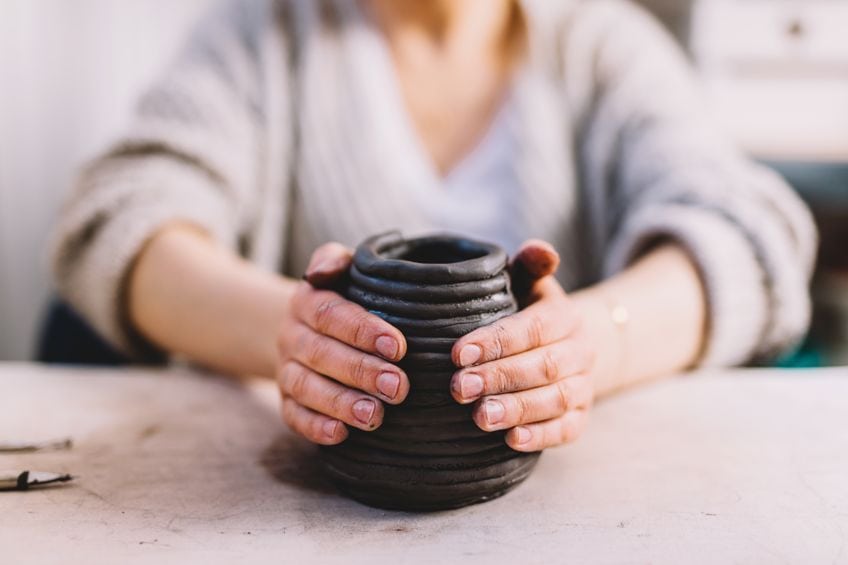
DIY Polymer Clay Board Games
If you are a board game enthusiast looking for a more challenging polymer clay project to tackle, this one is for you. Using different tools and paints, you can construct your own board games out of clay. For starters, you can create simple board games like tic-tac-toe. Once you have developed more confidence, you can try your hand at making more complex games like chess or checkers.
You can even craft your game pieces using polymer clay. Imagine having your very own handmade polymer clay chess set.
Coasters
Coasters are among the most fun household items to make using polymer clay. Once you have learned some of the more complex clay-making techniques, such as how to add marbled textures, you can make some pretty impressive coasters. This can really liven up the dinner table or a tea party and can make for a fun conversation piece when entertaining guests. You can also use certain kinds of polymer clay to give your coasters a metallic finish. If you are feeling like being a bit extra, why not experiment with decorating your coasters using gold leaf? Just be sure to use a sealant to prevent liquids and heat from damaging your coasters.
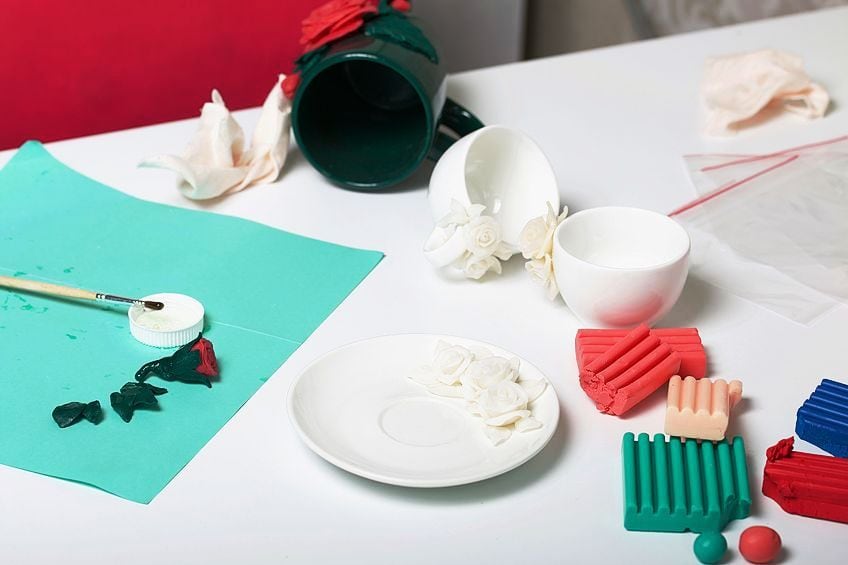
Pots and Bowls
Once you have really gotten the hang of tinkering with polymer clay, you can start creating bigger pieces, like pots and bowls. These can be fun and rewarding to make because they not only elevate the aesthetic quality of a space but also offer a utilitarian purpose. You can use these containers as pots for plants or storage for utensils.
A simple method of constructing the perfect shape for your clay pots and bowls is to mold the clay around pre-existing crockery.
Artwork for the Wall
Once you have truly mastered the craft of polymer clay, you should be ready to step into the realm of fine art. You should eventually develop the skills and know-how to begin creating beautiful, intricate sculptures that can be pinned to the wall or framed to art some powerful artistic flair to your household.
Safety Instructions for Polymer Clay
Making arts and crafts projects with polymer clay can be such a fulfilling experience, enjoyable not only for you but for your kids as well. You just want to make sure that you follow the proper precautions and instructions to avoid ruining your project or causing injuries. Here are some helpful tips to follow when working with polymer clay:
- Be sure to bake your clay properly. The best temperature to bake polymer clay at is between 250 ˚F – 300 ˚F (121 °C – 149 °C). Depending on the size of your clay piece, baking should be done for between 15 to 30 minutes. An over thermometer can be used to make sure your clay is cooking at the right temperature.
- Avoid burning yourself with the fumes generated during the baking process, especially when opening the oven to inspect the progress or when pulling your clay pieces out. Even though most polymer clays are non-toxic and neither are their fumes, they can burn skin and can damage your throat, eyes, or sinuses when at high heat.
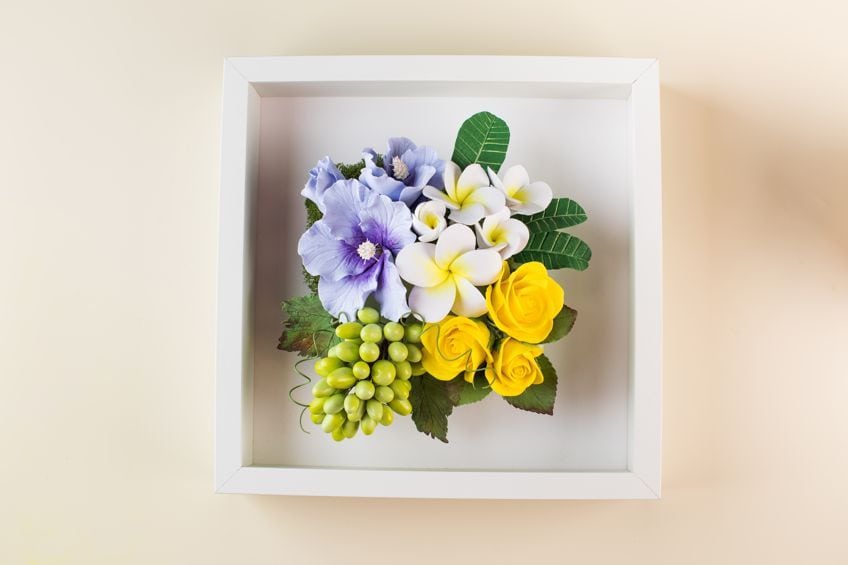
- Make sure to clean your hands thoroughly after working with polymer clay. You can do this using warm water and soap but hand sanitizer works just as well. It is also a good idea to always keep some hand wipes nearby to prevent clay deposits from accumulating on your hands and under your nails during the crafting process.
- If you plan on baking your polymer clay using your kitchen oven, make sure to do so on a day when the oven will not be needed to make food in order to avoid contamination. You should also give your oven a good clean before you use it for food after it has been used to bake polymer clay. Furthermore, you should use different baking trays for polymer clay and food.
Thank you for taking the time to read this article! If you made it this far, you should now be brimming with all sorts of fantastic ideas on how to work with polymer clay whether you are a newbie or an erudite.
Frequently Asked Questions
What Is the Best Paint for Polymer Clay?
Acrylic is perhaps the best paint to use for clay in general. Not only can it be applied both before and after you bake your polymer clay, but it also seals your pieces and makes them more durable. It is super easy to apply to polymer clay and, unlike most other paints, does not discolor that much when baked.
What Is the Best Brand of Polymer Clay?
You are encouraged to try out the polymer clay produced by the Sculpey brand. Their clays are non-toxic and come in a wide variety of colors, textures, and levels of durability.
Why Does My Polymer Clay Break?
If your polymer clay projects keep breaking after baking, you are probably not curing them at a high enough temperature or are not baking them long enough. Other than that, you might be using a brittle brand of polymer clay, in which case, you are encouraged to try a different brand like Sculpey.
In 2005, Charlene completed her Wellness Diplomas in Therapeutic Aromatherapy and Reflexology from the International School of Reflexology and Meridian Therapy. She worked for a company offering corporate wellness programs for a couple of years, before opening up her own therapy practice. It was in 2015 that a friend, who was a digital marketer, asked her to join her company as a content creator, and this is where she found her excitement for writing.
Since joining the content writing world, she has gained a lot of experience over the years writing on a diverse selection of topics, from beauty, health, wellness, travel, and more. Due to various circumstances, she had to close her therapy practice and is now a full-time freelance writer. Being a creative person, she could not pass up the opportunity to contribute to the Art in Context team, where is was in her element, writing about a variety of art and craft topics. Contributing articles for over three years now, her knowledge in this area has grown, and she has gotten to explore her creativity and improve her research and writing skills.
Charlene Lewis has been working for artincontext.org since the relaunch in 2020. She is an experienced writer and mainly focuses on the topics of color theory, painting and drawing.
Learn more about Charlene Lewis and the Art in Context Team.
Cite this Article
Charlene, Lewis, “Polymer Clay Ideas – Fun Things to Make with Polymer Clay.” Art in Context. October 6, 2022. URL: https://artincontext.org/polymer-clay-ideas/
Lewis, C. (2022, 6 October). Polymer Clay Ideas – Fun Things to Make with Polymer Clay. Art in Context. https://artincontext.org/polymer-clay-ideas/
Lewis, Charlene. “Polymer Clay Ideas – Fun Things to Make with Polymer Clay.” Art in Context, October 6, 2022. https://artincontext.org/polymer-clay-ideas/.


